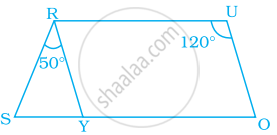Advertisements
Advertisements
प्रश्न
In the given figure, AP is the bisector of ∠A and CQ is the bisector of ∠C of parallelogram ABCD. 
Prove that APCQ is a parallelogram.
उत्तर
Construction: Join AC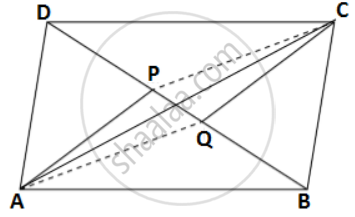
Proof:
∠BAP = `1/2`∠A ...( AP is the bisector of ∠A )
∠DCQ = `1/2`∠C ...( CQ is the bisector of ∠C )
⇒ ∠BAP = ∠DCQ ....(i)....[ ∠A = ∠R ( Opposite angles of a parallelogram.) ]
Now,
∠BAC = ∠DCA ....(ii)....[ Alternate angles since AB || DC ]
Subtracting (ii) from (i), We get
∠BAP - ∠BAC = ∠DCQ - ∠DCA
⇒ ∠CAP = ∠ACQ
⇒ AP || QC .....( Alternate angles are equal )
Similarly, PC || AQ.
Hence, APCQ is a parallelogram.
APPEARS IN
संबंधित प्रश्न
In the following figure, ABCD and PQRS are two parallelograms such that ∠D = 120° and ∠Q = 70°.
Find the value of x.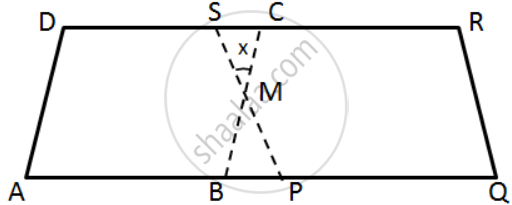
In the following figures, find the remaining angles of the parallelogram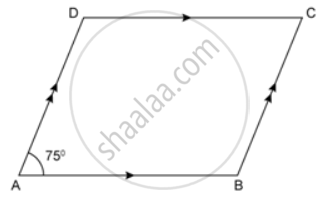
In the following figures, find the remaining angles of the parallelogram
In the following figures, find the remaining angles of the parallelogram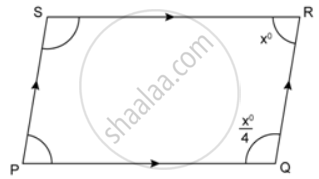
Find the measures of all the angles of the parallelogram shown in the figure: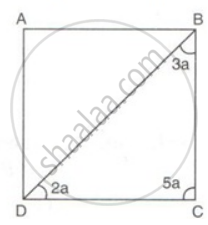
The angles of a triangle formed by 2 adjacent sides and a diagonal of a parallelogram are in the ratio 1 : 5 : 3. Calculate the measures of all the angles of the parallelogram.
PQR is a triangle formed by the adjacent sides PQ and QR and diagonal PR of a parallelogram PQRS. If in ΔPQR, ∠P : ∠Q : ∠R = 3 : 8 : 4, Calculate the measures of all the angles of parallelogram PQRS.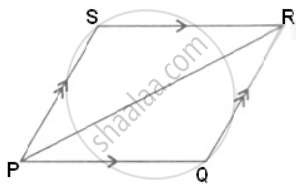
If PQRS is a parallelogram, then ∠P – ∠R is equal to ______.
The sum of adjacent angles of a parallelogram is ______.
In the given parallelogram YOUR, ∠RUO = 120° and OY is extended to point S such that ∠SRY = 50°. Find ∠YSR.
